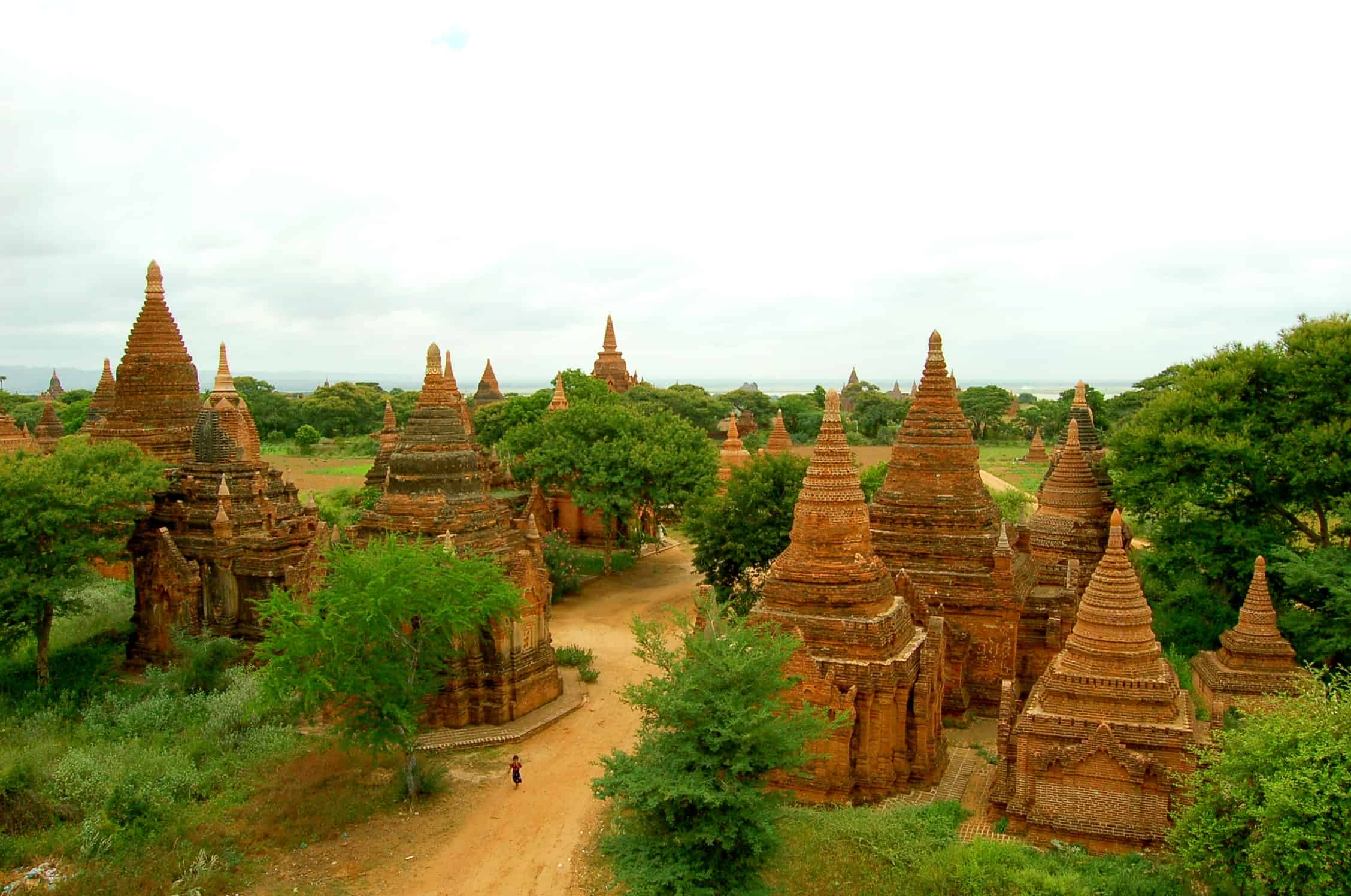Burma, otherwise known as Myanmar, is a pilgrim country not only for Buddhists, but for travellers that have a near-religious dedication to history, beautiful cities and beaches. The country is home to thousands of Buddhist temples, with the culture that radiates the teaching of the Buddha, while the shores are lined with the sugar-white quality of sand that has come to be expected from beaches in Southeast Asia. Although some portions of Burma are closed off to visitors without a special permit, the ancient wonders and unique cities are still open as the country's biggest attractions.
Bagan
 https://www.flickr.com/photos/worak/
https://www.flickr.com/photos/worak/
As Burma's most popular tourist destination, Bagan is for travellers that have a passion for Buddhist temples, pagodas and stupas. Bagan was once the capital of the First Burmese Empire during its reign from the 9th century until the 13th century. It was this site that Marco Polo described as the gilded city for its collection of gold encrusted temples. However, after repeated raids by Mongol armies, the ruling Pagan dynasty in Bagan fell and many of the citizens of the city relocated to stronger empires in the north. During its heyday, Bagan was home to upwards of 13,000 temples. While the ancient city doesn't have all of its past grandeur, it still hosts 2,200 temples, pagodas and stupas that remain standing, including the famous Ananda temple with its brilliant sparking gold spires. For travellers with an interest in Buddhism and Burma's long history, Bagan should be a first stop while in the country.
Yangon
 https://www.flickr.com/photos/danspink/
https://www.flickr.com/photos/danspink/
Although Yangon is one of Burma's largest cities, it is by no means a modern one. Victorian buildings sit neatly on tree-lined avenues, with the city centre filled with not the neon lights and skyscrapers of other Southeast Asian metropoleis, but rather clustered kiosks of friendly merchants and residents weaving intricately through the crowds in their traditional Longyi and flip-flop sandals. A trip to Yangon is essentially like taking a step back in time to view city infrastructure of days long past. As visitors explore Yangon, there is one sight in the city that will dominate their attention - the Shwedagon Pagoda. This prominent landmark, covered in gold leaf and intricately lit was built more than 2,000 years ago, and has become revered among Buddhists and non-Buddhists alike. Yangon is likely to be the first stop of travellers not just for its fascinating sights, but as it is Burma's gateway to Asia through both air and sea.
Mandalay
 https://www.flickr.com/photos/slapers/
https://www.flickr.com/photos/slapers/
Located 700 km north of Yangon nestled between the mighty Ayeyarwaddy River and Shan Plateau is the city of Mandalay, the last Royal Capital of Burma. Although the county has shifted from a monarchy to a republic, Mandalay still remains a centre of Burmese culture, trade and is home to a number of the country's talented artisans. The ornate walls around the former Royal Palace and the pagodas and monasteries scattered about Mandalay Hill are some of the most visible features of the city, but a wander around the commercial district should not be missed. Although the most modern part of the city, the commercial district of Mandalay is where local residents and the abundance of Chinese expats show off their unique talents through their diverse crafts including weaving, woodworking, as well as both stone and metalwork.
Inle Lake
 https://www.flickr.com/photos/fischerfotos/
https://www.flickr.com/photos/fischerfotos/
With stilted villages and floating gardens lining the golden shores against a backdrop of hazy mountain ranges, Inle Lake is arguably even more beautiful than Burma's own beachfront. Situated in the Shan State more than 1,000 meters above sea level, the lake serves as the peaceful home to the Intha people as well as other ethnic minorities. The serene lake waters seem to inspire an air of peace among people as the aroma of fresh flowers or ripe tomatoes waft through the air from the floating gardens. While visitors sail through the often cool air around the lake, they will hear the silk looms clanking or the ironsmiths tapping within nearby villages or glide past fishermen throwing their fish traps into the water from shallow bottom boats. While any time is perfect for a visit to Inle Lake, visitors will find more activity during September and October when the ceremonial Hpaung Daw U Festival and Thadingyut Festival of Lights takes place.
Mrauk U
 https://www.flickr.com/photos/dany13/
https://www.flickr.com/photos/dany13/
Like Bagan, Mrauk U is another ancient capital city in Burma. During the 15th century, Mrauk U served as the sprawling centerpiece of the Rakhine Kingdom under the rule of its builder King Min Saw Mon. During it's time, Mrauk U was renowned as the richest city in Asia, trading its goods with the Middle East. Visiting Friar Sebastian Manrique wrote about the "oriental splendor" of the city after visiting the area in the early 17th century, causing its popularity and potential for trade to explode throughout Europe. Today, little remains of the original city except for the fascinating temples and stupas that have withstood the tests of time, dotting the cities many surrounding hills and hidden amongst ruins. The city is now most famous for its beautifully preserved wall paintings and religious statues that also show signs of early Indian influences in the area.


